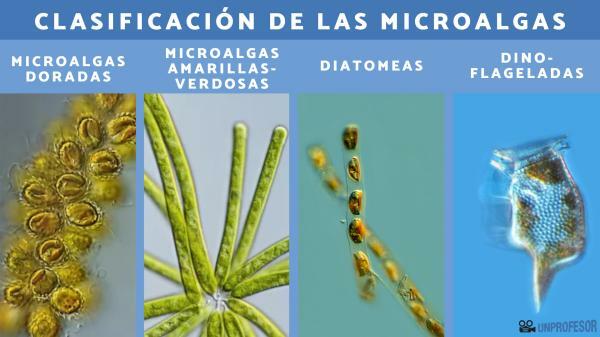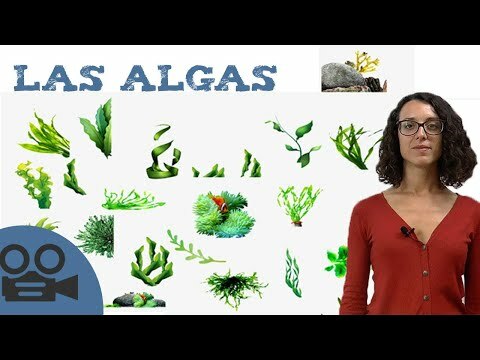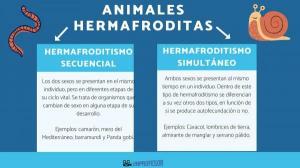Classification of algae

Algae are mainly classified into two groups: macroalgae (multicellular) and microalgae (unicellular). Within these categories, the classification of algae continues macroalgae that are brown, green and red algae and golden, yellow-green microalgae, diatoms and dinoflagellates.
Algae are photosynthetic organisms that can be found in various aquatic environments, from oceans and rivers, to lakes and puddles. Although they share the ability to carry out photosynthesis with land plants, algae are more diverse and can be classified into several groups. Unlike plants, many algae lack roots, stems, and distinct leaves.
In this lesson from a TEACHER, we are going to explain to you what is the classification of algae, so that you understand the characteristics and functions of each of these living beings.
Index
- What is the classification of algae
- Characteristics of algae
- Are there edible algae?
What is the classification of algae.
The simplest way to classify algae, without making mistakes, is through the
two large groups: microalgae and macroalgae. Each of these types groups a series of algae inside. Let's take a closer look.Macroalgae
Macroalgae are those that are formed in a multicellular way, that is, by many cells joined together. However, unlike other living beings, macroalgae are not capable of performing different tasks, but rather cover all the same functions in the biocellular process. These macroalgae are divided by their three predominant colors:
- Brown algae: They are algae with a color that ranges between brown and ocher yellow. Its brightness and opacity may vary depending on the specific species. This coloration in their cellular pigment is what allows them to survive in greater aquatic depths, where they capture less light, but can make the most of it.
- Green algae: Within green algae we can find both multicellular and unicellular species, so this type could also be added to the microalgae section. Their pigmentation makes them very adaptable to the environment in which they live, which is why they can survive in salty, brackish or fresh waters. The green of their cell body is due to the chlorophyll content in them (as in land plants). Because they need sunlight to survive, they are not usually found at great depths.
- Red algae: Finally, red algae mainly contain chlorophyll and carotene, which is what gives it its characteristic red color. They can be duller or brighter, depending on the species. These red pigments make it very sensitive to the perception of the sun, so it can live at greater depths than green algae. These are the most complex macroalgae with the greatest capacity for survival.
Microalgae
The second major branch in which algae are classified is microalgae. Microalgae are unicellular algae, so that they can be found living as a single individual or in the form of colonies, with more specimens of the same species. They are so small that it is very difficult to identify them by their color with the naked eye, but this is their classification:
- Golden microalgae: These microalgae live in salt and fresh waters, usually in colonies of multiple individuals.
- Yellow-green microalgae: They are very typical in stagnant fresh waters, such as swamps or swamps. There they form enormous colonies of millions of individuals.
- Diatoms: They are microscopic organisms that cannot be classified by their color. This is the most common type of phytoplankton, making them one of the most important species in maritime food chains. They also have a lot to do with changes in sea temperature.
- Dinoflagellates: These microalgae are also microscopic organisms that are part of phytoplankton and are present in both fresh and salt waters. Despite their small size, they have chlorophyll and carotenes and also play an extremely important role in marine food chains.
In this other lesson from a TEACHER you can delve deeper into the topic of Characteristics of unicellular algae.


Characteristics of algae.
Now that you know the classification of algae, we want to present its main features so that you can better understand this fairly unknown living being. The main characteristics of algae are the following:
- They are autotrophic organisms: Autotrophic organisms are those that have the ability to obtain energy and nutrients from inorganic matter or from sunlight, through a process of photosynthesis. Algae, in particular, have the ability to carry out photosynthesis and need a very humid or aquatic environment to survive.
- They are protists: Algae do not belong to the plant kingdom, although for many years they have been part of this group. Algae belong to the kingdom Protista (This kingdom includes all those eukaryotic organisms unicellular and multicellular with anatomical and functional characteristics intermediate between plants and animals. animals). Learn more about the Kingdom protista: characteristics and classification here.
- They usually form underwater meadows: They usually do it, both in salt and fresh water. It can also develop on rocks, logs or other surfaces that are very wet.
- They belong to the group of primary producers: On earth, the function of primary producers would belong to vegetables.
- Phytoplankton is made up of algae: As we mentioned before, phytoplankton is made up of algae. It is a very important component, since it produces between 30% and 50% of the oxygen in our atmosphere.
Are there edible algae?
The answer is yes, there are algae that are edible. Surely you have ever gone to an Asian restaurant and seen a seaweed dish on the menu. Have you asked for it? The truth is that in Asia they are experts in taking advantage of these living beings from the kingdom of Protists. These are some examples of edible algae:
- Agar-agar
- nori seaweed
- Kelp
- Arame
- Hiziki
- Cochayuyo
- Kombu
- Wakame
- sea spaghetti
- Dulse
We hope that this lesson has helped you understand a little better the classification of algae and the importance of these living beings on our planet. In the video below we tell you more information about algae and, if you want to continue learning more about this topic or a similar one, do not hesitate to consult our biology section.

If you want to read more articles similar to Classification of algae, we recommend that you enter our category of biology.
Bibliography
- López-Padrón, I., Martínez-González, L., Pérez-Domínguez, G., Reyes-Guerrero, Y., Núñez-Vázquez, M., & Cabrera-Rodríguez, J. TO. (2020). Algae and their uses in agriculture. An updated vision. Tropical Crops, 41(2).
- Cardó, C. N. (2016). Seaweed for feeding Peruvians. Tourism and heritage, (10), 55-68.



